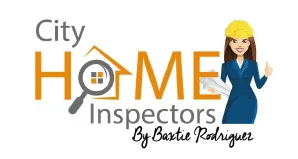
Why Ice Dams Form—and How Roof Inspections Prevent Them
🧊 Why Ice Dams Form—and How Roof Inspections Prevent Them
A Chicago/Midwest guide to stopping winter roof leaks before they start
When snow hits Chicagoland, picturesque rooflines can hide a costly problem: ice dams. These ridges of ice along the eaves trap meltwater, forcing it back under shingles and into ceilings, walls, and insulation. The good news? Most ice dams are preventable—and November is the time to act.
❄️ Ice Dams 101: The Midwest Chain Reaction
Ice dams aren’t just “too much snow.” They’re a heat-loss problem:
Warm air escapes from the living space into the attic through gaps (attic hatches, light fixtures, bath fans, wall tops).
Attic warms the roof deck, snow melts higher up.
Meltwater refreezes at the cold eaves, forming a dam.
Water pools behind the dam and finds its way under shingles and into the home.
Chicago’s freeze-thaw swings, north-facing roofs, low winter sun, and lake-effect bursts make this cycle especially aggressive.
🔎 What Our Late-Fall Roof & Attic Inspections Check
We focus on air sealing first, then insulation and ventilation—because ventilation can’t fix a leaky ceiling plane.
Attic Air Leaks (Biggest culprit): Gaps at can lights, bath/kitchen fan ducts, chimney chases, plumbing stacks, attic hatches, knee walls.
Insulation Quality, Depth & Coverage: Look for uneven “snow-drift” patterns, compressed batts, voids at eaves, and missing baffles.
Ventilation Balance: Clear, continuous soffit intake + effective ridge or roof-top exhaust; blocked soffits are a frequent find in older two-flats/bungalows.
Bath/Kitchen Fan Terminations: Fans must exhaust outside, not into the attic.
Roof Details: Ice-shield underlayment at eaves/valleys, flashing integrity, prior leak stains, and vulnerable low-slope transitions.
🛠️ The Prevention Playbook (Do These in November)
1) Air-Seal the Ceiling Plane
Weather-strip and insulate the attic hatch.
Seal around light fixtures (use IC-rated, airtight trims), top-plate gaps, plumbing/electrical penetrations, and chimney chases (with proper fire-safe materials).
2) Right-Size & Unblock Ventilation
Clear soffit vents; add baffles to keep insulation out of the airflow path.
Pair soffit intake with ridge (or dedicated roof) exhaust for steady attic temperatures.
3) Upgrade Insulation Smartly
After air-sealing, top up attic insulation to modern performance levels; ensure even coverage—thin spots above exterior walls are classic ice-dam zones.
4) Fix Moisture Sources
Vent bath and kitchen fans outdoors with sealed, insulated ducts.
Address attic humidity (wet sheathing = freeze issues later).
5) Roof-Edge Defenses
Verify ice-and-water shield at eaves and valleys during reroofs.
Keep gutters clear so meltwater can exit (gutters don’t cause dams, but they do worsen overflow if clogged).
🚨 If You Get an Ice Dam Anyway
Use a roof rake from the ground to remove fresh snow 3–4 feet above the eaves.
Skip chisels and salt: They damage shingles and metal. If needed, use calcium chloride “socks” placed gently on the dam to create channels.
Control interior moisture and catch drips; then plan permanent fixes (air-seal/insulate/vent) once weather allows.
🏠 Chicago House Types: What We See Most
Brick Bungalows: Warm knee-wall attics, blocked soffits, thin insulation over exterior walls.
Two-Flats/Greystones: Complex roof intersections, shared vent stacks, older bath fan terminations into attics.
1.5-Story Homes: Short rafter bays and tight eaves—air-sealing and baffles are essential.
✅ The Bottom Line
Ice dams are a symptom of heat loss and poor airflow—not just winter weather. A November roof & attic inspection pinpoints the air leaks, insulation gaps, and ventilation blockages that start the chain reaction, so you can stop leaks before the first deep freeze.
👉 Get winter-ready now. Book your pre-snow roof & attic inspection with City Home Inspectors: www.cityhomeinspectors.com
OFFICE ADDRESS
Illinois
City Home Inspectors, LLC
1010 Lake St. #200
Oak Park, IL 60301
Florida
1010 Lake St. #200
Sarasota, Fl 34236
